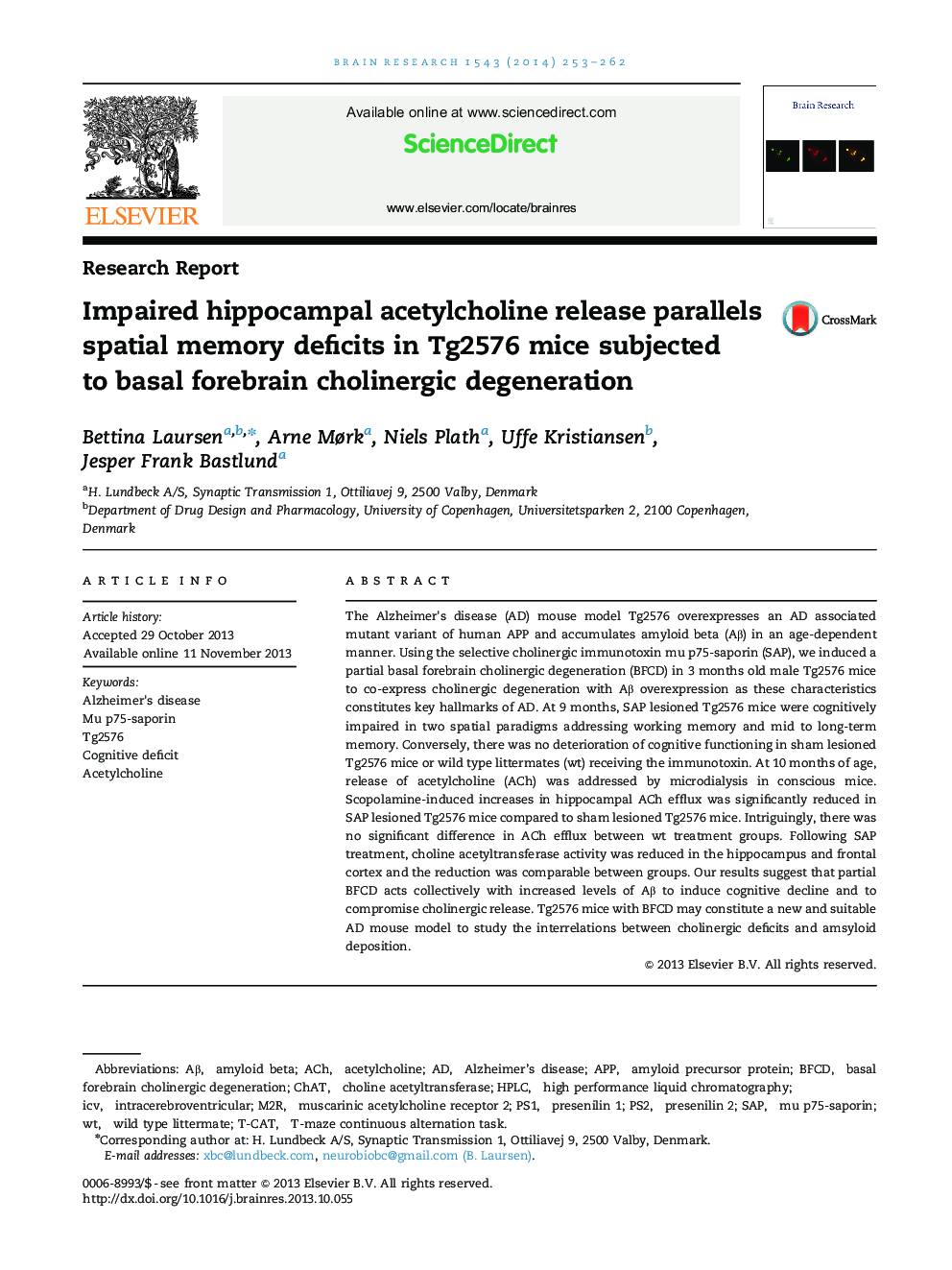| Article ID | Journal | Published Year | Pages | File Type |
|---|---|---|---|---|
| 6263460 | Brain Research | 2014 | 10 Pages |
â¢Tg2576 mice are subjected to basal forebrain cholinergic lesions.â¢The model mimics neuropathological characteristics of Alzheimer's disease.â¢The mice have cognitive deficits in spatial tasks.â¢The mice have reduced acetylcholine efflux following scopolamine infusion.
The Alzheimer's disease (AD) mouse model Tg2576 overexpresses an AD associated mutant variant of human APP and accumulates amyloid beta (Aβ) in an age-dependent manner. Using the selective cholinergic immunotoxin mu p75-saporin (SAP), we induced a partial basal forebrain cholinergic degeneration (BFCD) in 3 months old male Tg2576 mice to co-express cholinergic degeneration with Aβ overexpression as these characteristics constitutes key hallmarks of AD. At 9 months, SAP lesioned Tg2576 mice were cognitively impaired in two spatial paradigms addressing working memory and mid to long-term memory. Conversely, there was no deterioration of cognitive functioning in sham lesioned Tg2576 mice or wild type littermates (wt) receiving the immunotoxin. At 10 months of age, release of acetylcholine (ACh) was addressed by microdialysis in conscious mice. Scopolamine-induced increases in hippocampal ACh efflux was significantly reduced in SAP lesioned Tg2576 mice compared to sham lesioned Tg2576 mice. Intriguingly, there was no significant difference in ACh efflux between wt treatment groups. Following SAP treatment, choline acetyltransferase activity was reduced in the hippocampus and frontal cortex and the reduction was comparable between groups. Our results suggest that partial BFCD acts collectively with increased levels of Aβ to induce cognitive decline and to compromise cholinergic release. Tg2576 mice with BFCD may constitute a new and suitable AD mouse model to study the interrelations between cholinergic deficits and amsyloid deposition.
